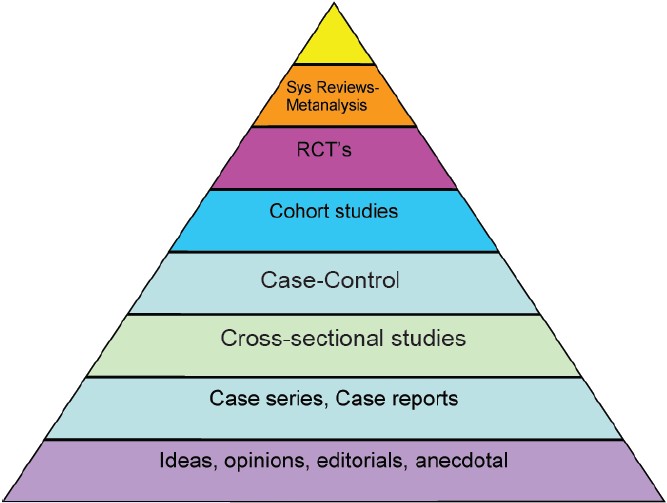 The ‘old way’ of thinking about the hierarchy of evidence was classically envisaged as a systematic review at the top, falling through RCT, cohorts and case-control to expert opinion (and below that, in some iterations, case law & legislative decisions).
The ‘old way’ of thinking about the hierarchy of evidence was classically envisaged as a systematic review at the top, falling through RCT, cohorts and case-control to expert opinion (and below that, in some iterations, case law & legislative decisions).
There’s been a move against this, with the GRADE system as explained recently in our popular Guest blog: The Systematic Review Speaks The Truth- or does it?
Another example has been published in the tricky field of idiopathic scoliosis, where a group have undertaken an overview of systematic reviews. What they demonstrate, using the AMSTAR approach of assessing systematic reviews, is a huge swath of low-quality reviews when assessing non-surgical interventions. The conclusions of these reviews appear to be more likely to be ‘positive’ than the higher quality reviews, much as expected.
While this message is not startlingly new, it does reinforce the need to always, always appraise the evidence you are looking at. You can do it quickly. You can do it extensively. But you need to do it.
– Archi